How to Care Your Pizza Stone?
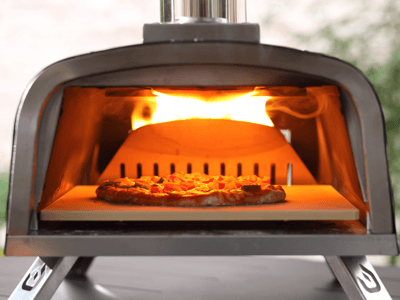
Why wouldn't you adore a pizza stone? A pizza stone creates crisp, delectably scorched pizza crusts, acting as a portable brick oven. Whether you live in a studio apartment or a log cabin in the woods, you can turn your kitchen into a hip pizzeria with a little elbow grease and a reliable pizza stone.
But because these stones produce unique pies, they also need unique maintenance. You do not want to leave your pizza stone in a sink of hot, soapy water overnight, unlike a filthy casserole dish. In fact, you want to let as little water touch your pizza stone as possible. Keep soap far away from your pizza stone in general.
in the absence of soap and water, how is a pizza stone cleaned? Without the occasional bath, wouldn't it be germy and smelly? Pizza stones are, after all, very unlike people. Extreme heat, which kills bacteria, won't harm them. Between 40 and 140 degrees Fahrenheit, bacteria can proliferate. At least three times as hot will be used to cook your pizza on the pizza stone.
Therefore, even while grease buildup or stains on your pizza stone might not make you ill, it is probably a good idea to give it a quick clean after each usage. How to clean your pizza stone is shown here.
Useful Cleaning Supplies for Pizza Stones
A pizza stone is typically flat and constructed of a porous material, such as cast iron, stone, or ceramic. Whatever chemical you use to clean the pizza stone with will be absorbed by it. This might have an effect on how the food tastes. The texture of the pizza crust will also be impacted by too much wetness.
Once the pizza is heated, the pizza stone absorbs moisture from the dough, creating a crispier crust. The crust won't become crisp if there is water trapped in the stone.
Prior to cleaning the pizza stone, always make sure it has cooled down. You don't want to burn your hands or drop the stone like a hot potato because heat can be trapped in there.
You probably already have the cleaning supplies you need in your kitchen. Use a tiny, flexible instrument that can slip under food particles that have become lodged, or use something abrasive to wipe away any lingering filth. When it comes time to clean your pizza stone, try to keep one or more of these close at hand:
- Table scraper
- sharp dining knife
- metal spoon
- a plastic spoon
- Sandpaper and a stone brush
- Cleaning pads
- Toothbrush
Use these tools only when there is no other way to remove burnt or stuck food because some of them may scratch your pizza stone. Unless you enjoy the flavor of soapy pizza, never use dish soap or any other cleaning agents on your pizza stone. Water is the only cleaning agent that should be used with a pizza stone, and even that should be used cautiously.
Safeguarding Your Pizza Stone
Yes, the only moisture you want to add to your stone is plain old water. But you can also make a cleaning paste out of vinegar and baking soda, which we'll go over in more depth later. What not to use on your pizza stone is as follows:
- Chemicals
- Cleaning soap
- Oils
Natural oil buildup in the stone from the food you cook turns it into a non-stick surface. The pizza stone won't properly bake the crust if you allow it to become too moist. The ideal situation is for your pizza stone to be totally dry before use. If required, you can wipe off any crumbs with a moist towel, but make sure the pizza stone is dry before doing so. We do not advise drying your pizza stone in the oven since any water that may have become trapped inside the stone could cause it to break.
How to Clean Your Pizza Stone Step by Step
So here's how to clean a pizza stone without soap and water in a sink:
- Apply a hot water stream in a tiny stream to the surface. Use the least amount of water possible because the pizza stone must be totally dry before being reused or stored.
- Scrub the pizza stone well using a stone brush.
- Use a moist rag to remove any food debris.
- Use a fresh towel to dry the pizza stone or let it air dry.
- If you can remove food with the brush first, you might not even need to use water. Water is not required, however it may aid in loosening food.
In order to reduce the likelihood of it breaking in between uses, store your pizza stone in the oven. Every time you use the oven, it will get seasoned. The oven may take longer to heat, though.
How to Use Baking Soda to Clean a Pizza Stone
Pizza stone stains represent affection and care. Imagine the mouthwatering pies you've baked on your stone. These imprints of enjoyable meals and moments are inherent and intended features of the stone. Unless you absolutely cannot take the sight of the stains, there is no need to remove them. Here's what you do to get rid of stains:
With a spatula or brush, first remove any food fragments from the dish.
- Make a paste using water and baking soda in equal parts. For instance, you may combine 1 tablespoon of baking soda with 1 tablespoon of water.
- Rub the stains with the paste.Till the stains are gone, apply the paste with a brush and scrub in circular motions.
- Use a wet cloth to clean.
- Give the stone time to dry thoroughly.
- Apply the baking soda paste to the grease stain, let it lie for a few minutes, then scrape the paste off with a brush. Finally, clean the stone with a damp cloth. Baking soda, as opposed to soap, will remove the stains from the pizza stone without altering the taste of subsequent pizzas.
You shouldn't worry about over-cleaning your pizza stone because remember, it's normal for it to have heavier stains. More seasoning and higher non-stick properties are indicated by a darker pizza stone. Own up to your stains!
Bake a loaf of buttered bread or some cookies on your stone to start the seasoning process in order to naturally season a new pizza stone without coating it with oil or grease. Just be careful not to cook something that will leave a strong smell on the stone, like fish, since the stone can pick up the smell.
How to Remove Burns from a Pizza Stone
You can give your pizza stone a thorough cleaning in the oven if there are any food particles that won't come off using a scraper or brush. This is how:
The oven should be preheated at 500 degrees.
- On the top rack of the oven, place the pizza stone.
- Give it an hour or so to bake.
- Verify the stone. There should form and explode grease bubbles.
- Once the bubbling has subsided, begin the auto-clean cycle. The stone may emit a lot of smoke if it is really filthy.
- Food scraps should burn off.
- Wait for the oven to cool after the cycle is complete.
Remove the pizza stone once it has cooled, then clean it with a fresh cloth.
If the heat is ineffective in cleaning the stone, you can use a piece of medium-grit sandpaper to remove any remaining crumbs.
How to Remove Mold from a Pizza Stone
If the mold on your pizza stone is present, too much moisture may have been present. You could not be letting your pizza stone to dry before storing it because mold needs moisture to develop.
What then ought should you do? To get rid of the mold, try a paste made of vinegar and baking soda. All that is required is:
- A teaspoon of baking soda should be combined with a small amount of vinegar until the mixture resembles paste.
- Use a brush and the paste to scrub the mold.
- Use a wet towel to clean the stone.
Additionally, stains can be eliminated using this paste. You might wish to throw away your beloved pizza stone and get a new one if this procedure does not successfully remove the mold. Even though most molds cannot withstand temperatures beyond 140 degrees Fahrenheit, keeping a moldy stone might not be worth the risk.
Mold can also be killed by other things like bleach, detergent, hydrogen peroxide, and tea tree oil, but none of these should be used on a pizza stone. Remember that a pizza stone is porous and would absorb any chemicals applied to it; some of the chemicals used to eradicate mold are hazardous.
How to Handle a Soap-Stained Pizza Stone
It's great to see all the dishes done and in the drying rack when you get home from work. But then you see your pizza stone, which is spotless, resting on the kitchen counter. Your heart suddenly stops. Margherita pizza with a soapy undertone fills your head with dread. Who is accountable for this catastrophe?
Take a deep breath before you spray your friend or spouse with dish soap in retaliation for breaking your pizza stone. It might work out. In fact, you might not even detect a soapy taste if your pizza stone was previously well-seasoned. But here's a tip you might do just to be secure:
- Spread pop-can crescent rolls or old pieces of bread on the pizza stone covering the surface.
- Bake the rolls as instructed or until the bread is toasted.
- The dough you used should absorb the soapy flavor.
- Toss the crescent rolls and bread in the garbage or feed them to the person who used soap on your pizza stone. Just kidding — it was nice of them to wash your dishes, after all.
If you still notice a soap flavor, don’t toss your pizza stone just yet. Try cleaning it with one of the above non-soap methods to help get rid of the soapy taste. The seasoning will build up again over time and cover unwanted flavors.


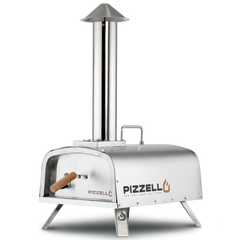
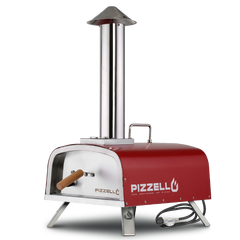
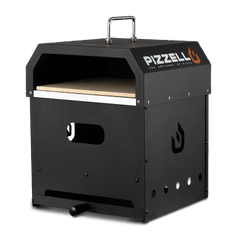
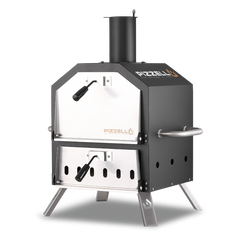
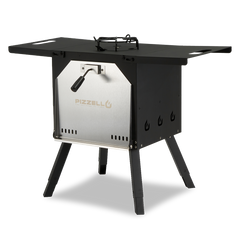



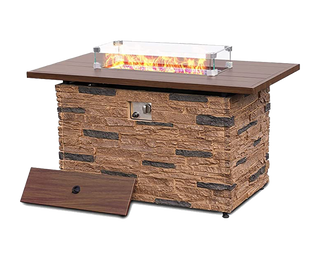

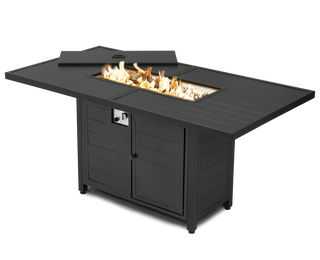

 Dining Table
Dining Table
 Cart
Cart
 Cart Pro
Cart Pro
 Pizza Stone
Pizza Stone
 Gas Burner
Gas Burner
 Pizza Peel
Pizza Peel
 Dining Chairs
Dining Chairs
 Wind Guard
Wind Guard
 Fire Glass Bead
Fire Glass Bead
 Waterproof Cover
Waterproof Cover















